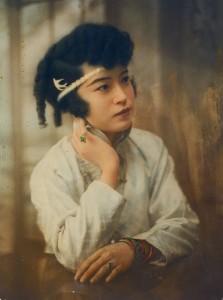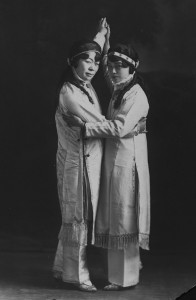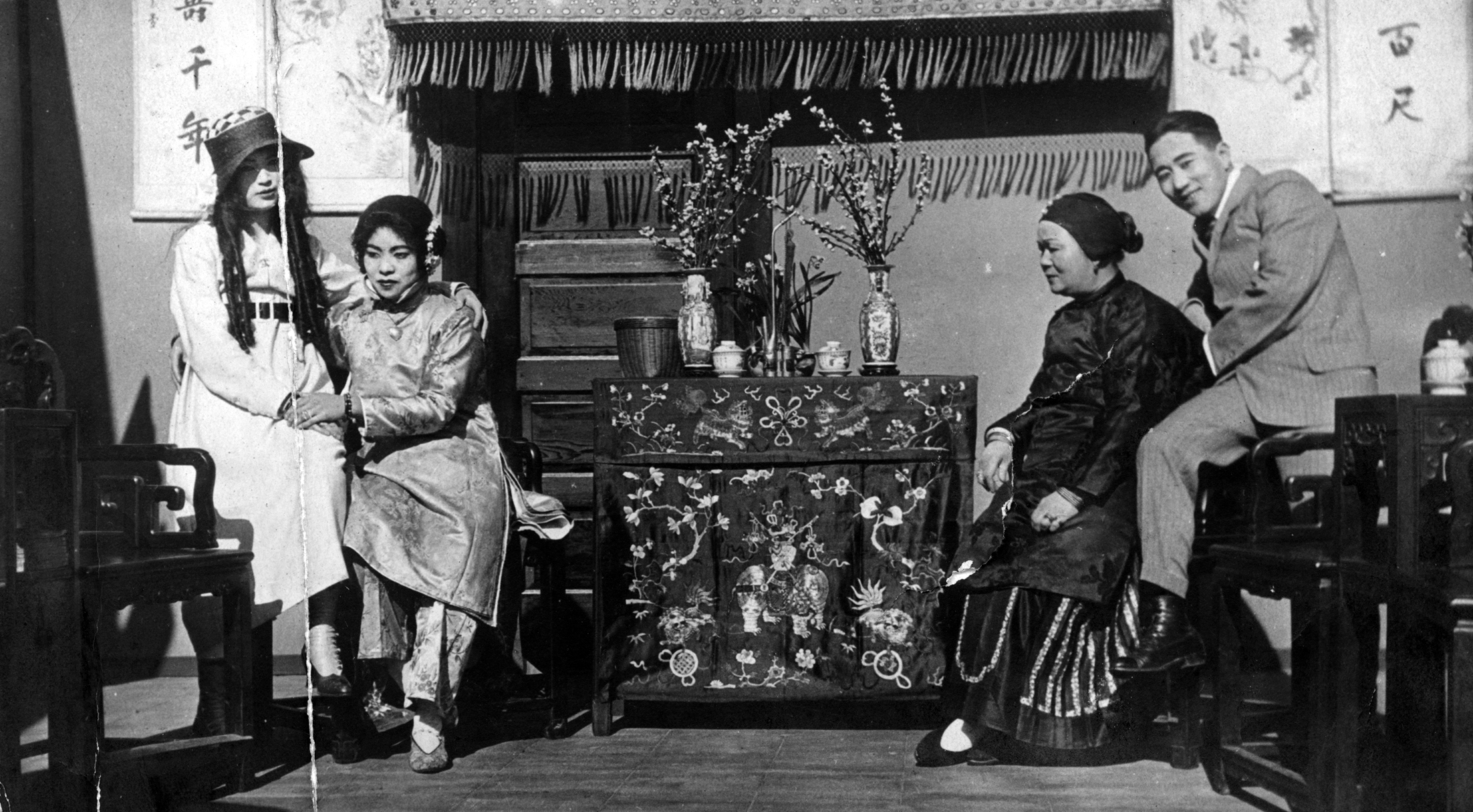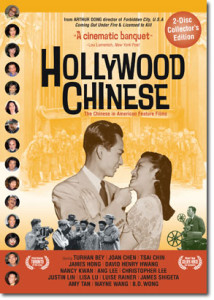 The Curse of Quon Gwon is the earliest example of Chinese American filmmaking known to exist today, and it is also one of the few American silent feature films made by a woman. Written and directed by Marion Wong, it was produced in 1916-17 by the Mandarin Film Company in Oakland, California. Wong, born 1895 in San Francisco, also plays the film’s apparent villainess. Many of the actors in the movie are family members, including Wong’s sister-in-law, Violet Wong (the heroine), and Marion’s mother, Chin Shee (the elder matron). Other family members were involved in different aspects of the film’s production, including costuming and finance. Actor Harvey Soo Hoo plays the male lead.
The Curse of Quon Gwon is the earliest example of Chinese American filmmaking known to exist today, and it is also one of the few American silent feature films made by a woman. Written and directed by Marion Wong, it was produced in 1916-17 by the Mandarin Film Company in Oakland, California. Wong, born 1895 in San Francisco, also plays the film’s apparent villainess. Many of the actors in the movie are family members, including Wong’s sister-in-law, Violet Wong (the heroine), and Marion’s mother, Chin Shee (the elder matron). Other family members were involved in different aspects of the film’s production, including costuming and finance. Actor Harvey Soo Hoo plays the male lead.
In 2004, during his research for Hollywood Chinese, filmmaker Arthur Dong was led to the only known existing material from The Curse of Quon Gwon. He discovered two surviving nitrate reels in the possession of the daughters of Violet Wong, lead actress in the film (the daughters are featured in Hollywood Chinese). They also had a 16mm print, which contained the same 35mm material plus an additional 10 minutes of footage. Dong was authorized to bring the material to the Academy Film Archive for preservation, returning this rare glimpse of early 20th Century cinematic work to its place in film history.
 “I was astonished,” recalls Dong. “It’s like digging up an unknown species of dinosaurs. To actually locate these moving images on film and to meet descendants of the filmmakers inspired me to continue with the completion of Hollywood Chinese – this chapter of history confirms, for the first time, the contributions of Chinese Americans in the formative years of America’s film industry.”
“I was astonished,” recalls Dong. “It’s like digging up an unknown species of dinosaurs. To actually locate these moving images on film and to meet descendants of the filmmakers inspired me to continue with the completion of Hollywood Chinese – this chapter of history confirms, for the first time, the contributions of Chinese Americans in the formative years of America’s film industry.”
But this type of discovery actually wasn’t new for Dong. For his earlier documentary on Chinese American nightclubs in 1940s San Francisco, Forbidden City, U.S.A. (1989), Dong also unearthed some archival gems. He recalls, “It was during my third meeting with Charlie Low, owner of the famed Forbidden City nightclub in San Francisco. As I’ve done before, I asked if he had any footage of the club. Perhaps by now he trusted me, or maybe he just remembered, but he took me to his closet and pulled out a shopping bag of film reels. ‘Take it, but I’m not sure what you’ll find,’ he said.” In the bag were 8mm commercial titles, home movies, and incredibly, several 16mm reels of performances, some in color. To date, this is the only footage that exists of a phenomenon when Chinese nightclubs were the hot spots of World War II San Francisco.
 The restored print of The Curse of Quon Gwon is incomplete. The original may have been seven or eight reels in length, as the surviving two nitrate reels were numbered reels four and seven. There are no existing intertitles in the original negative, but frames with sequential numbers indicate where the intertitles might have been inserted. The 16mm print looks to be derived from this original negative, as it has the exact same numbered frames. As to the language of the intertitles, they were most likely in English as the opening title card is only in English. The preservation print restored by the Academy Film Archive runs 35 minutes.
The restored print of The Curse of Quon Gwon is incomplete. The original may have been seven or eight reels in length, as the surviving two nitrate reels were numbered reels four and seven. There are no existing intertitles in the original negative, but frames with sequential numbers indicate where the intertitles might have been inserted. The 16mm print looks to be derived from this original negative, as it has the exact same numbered frames. As to the language of the intertitles, they were most likely in English as the opening title card is only in English. The preservation print restored by the Academy Film Archive runs 35 minutes.
So far no existing script has been located. However, according to the July 17, 1917 issue of The Motion Picture World, the film “deals with the curse of a Chinese god that follows his people because of the influence of western civilization. The first part is taken in California, showing the intrigues of the Chinese who are living in this country in behalf of the Chinese monarchical government, and those who are working for the revolutionists in favor of a Chinese republic. A love story begins here and is carried through the rest of the production.”
In 2006, representing the Academy of Motion Picture Arts & Sciences on the National Film Preservation Board of the Library of Congress, Dong succeeded in placing The Curse of Quon Gwon on the National Film Registry. Only 25 films are named annually, and the selection of a film recognizes its importance to American movie and cultural history. Four years later, Dong commissioned noted silent film composer and performer, Judy Rosenberg, to create a new score for the film. The Curse of Quon Gwon is now as complete as possible and ready to be screened. Hopefully, more information and possibly other reels of the film will surface in the years to come.
LEARN MORE: Marion Wong and The Curse of Quon Gwon are the subjects of a fully-illustrated chapter in the book, Hollywood Chinese: The Chinese in American Feature Films.


